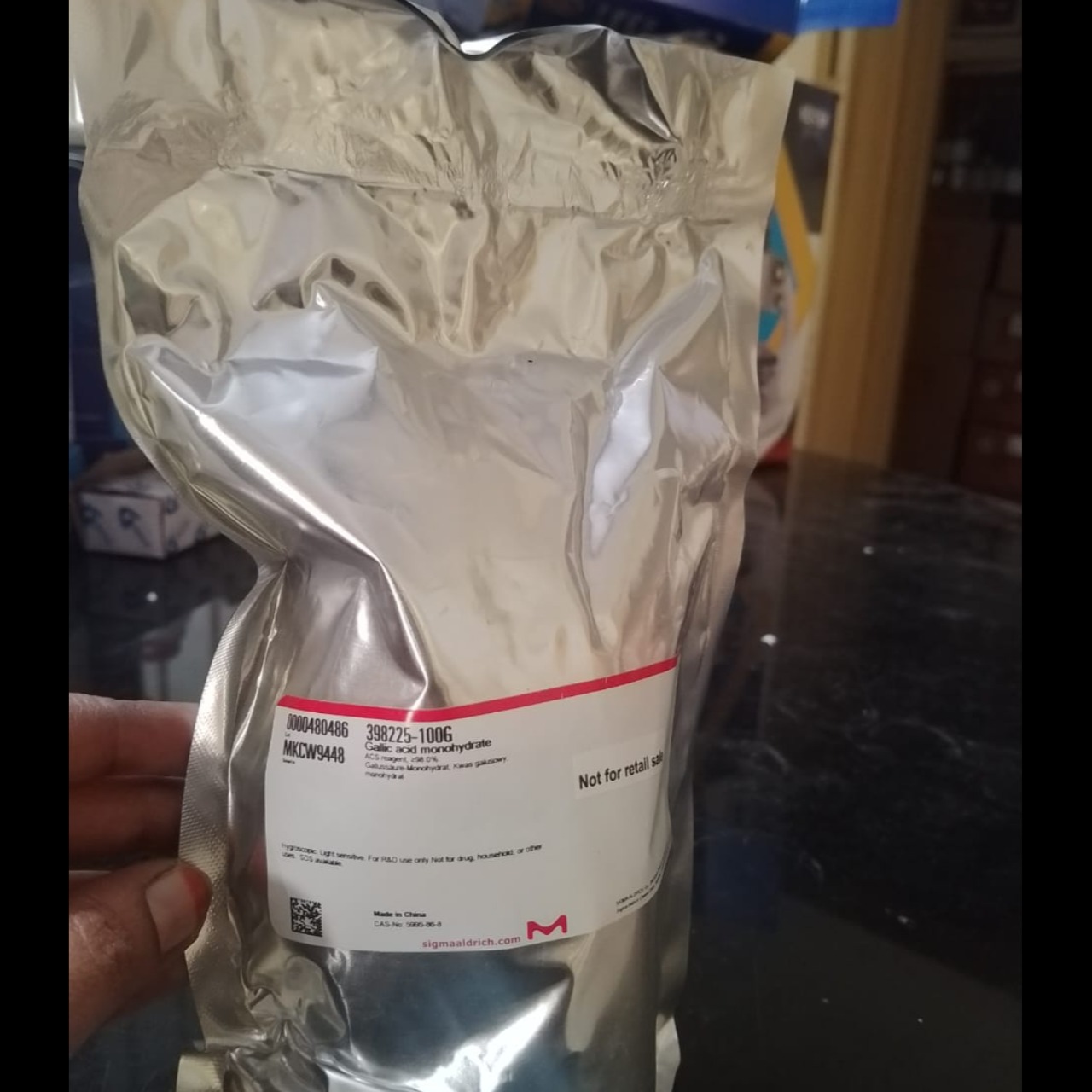
2025-08-28T05:04:47
Gallic acid monohydrate is an off-white, odorless solid phenolic acid classified as a trihydroxybenzoic acid with the chemical formula C₇H₆O₅·H₂O and CAS number 5995-86-8. It is partially soluble in water and is used as a reactant or ingredient in various industries, including inks, dyes, and Ayurvedic medicines, and possesses antioxidant properties. Uses and applications Pharmaceuticals: It is used in health supplements and medications to reduce oxidative stress due to its antioxidant and anti-inflammatory effects. Food and beverage industry: It acts as a natural antioxidant and preservative to extend the shelf life of products and prevent spoilage and rancidity. Food packaging: Gallic acid can be incorporated into active and smart food packaging materials to enhance their antimicrobial, antioxidant, and barrier properties. Cosmetics: It is used in skincare products for its antioxidant, anti-inflammatory, and skin-soothing properties. It also acts as a potential skin-lightening agent. Dyes and pigments: Its ability to form a blue complex with iron has been historically used to make iron gall ink. It is also used in the production of natural dyes. Analytical chemistry: It serves as a standard for determining the total phenolic content of plant extracts in assays like the Folin-Ciocalteu method.Biological activities Antioxidant and anti-inflammatory: It scavenges free radicals, reduces oxidative stress, and inhibits inflammatory cytokines and enzymes. Anti-cancer: It has shown cytotoxicity against cancer cells in lab settings, inducing apoptosis and inhibiting growth. Antimicrobial: It exhibits antibacterial and antifungal activities against various microbes, including resistant strains and biofilms. Neuroprotective: Research suggests it can help manage neurodegenerative diseases like Alzheimer's and Parkinson's by reducing neuroinflammation and oxidative stress. Cardiovascular health: Studies indicate potential benefits for cardiovascular diseases by reducing blood pressure, lowering cholesterol, and inhibiting platelet aggregation.

Have a question? Ask here!
Required fields are marked *